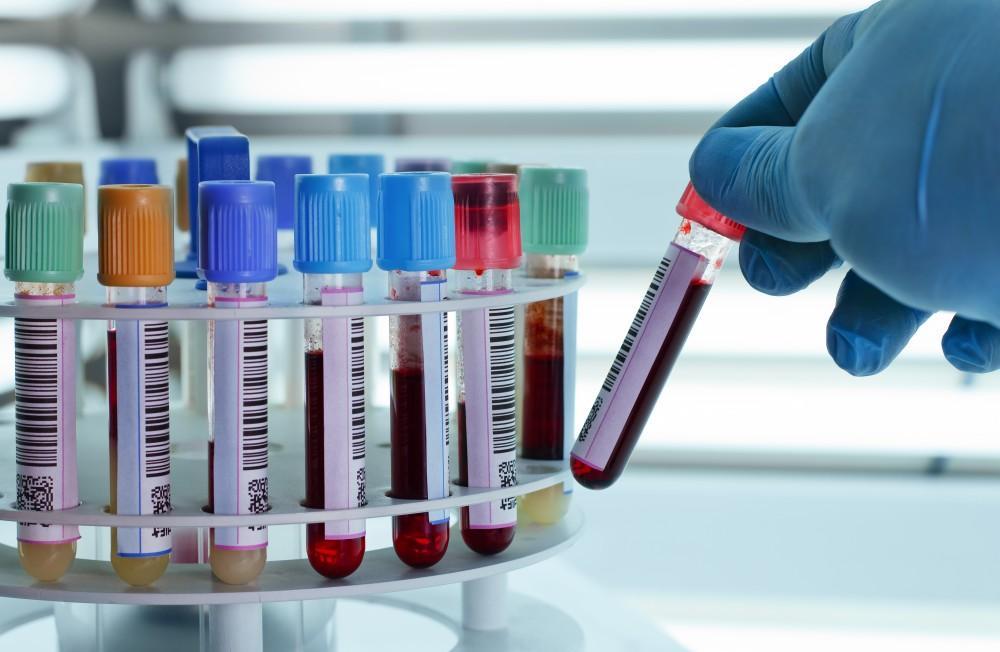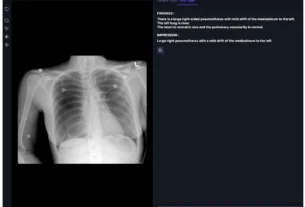In a groundbreaking new study, researchers have identified three blood biomarkers that could provide women with a clearer picture of their heart disease risk decades before symptoms appear. The findings, published in the prestigious Journal of the American College of Cardiology, offer hope for early detection and prevention of heart disease, the leading cause of death among women worldwide. This discovery represents a significant advance in personalized medicine, potentially allowing for more targeted interventions to reduce the incidence of heart disease in women.
The Silent Killer: Heart Disease in Women
Heart disease has long been recognized as a major health threat, but its impact on women has often been underappreciated. For decades, heart disease was primarily considered a “man’s disease,” with much of the research and public health efforts focusing on male populations. However, the reality is that heart disease is the leading cause of death for women, claiming more lives each year than all forms of cancer combined.
One of the challenges in addressing heart disease in women is that it often presents differently than it does in men. Women are more likely to experience subtler symptoms, such as fatigue, shortness of breath, and nausea, rather than the classic chest pain often associated with heart attacks. This can lead to delays in diagnosis and treatment, which can have deadly consequences.
The Importance of Early Detection
Early detection is crucial in the fight against heart disease. Identifying those at risk before symptoms develop allows for timely interventions that can prevent the progression of the disease. However, traditional risk factors such as high blood pressure, high cholesterol, and smoking do not always paint a complete picture, especially for women. This is where the new study’s findings on blood biomarkers come into play.
The Study: A Closer Look at Blood Biomarkers
The study, conducted by a team of researchers at a leading medical institution, focused on identifying specific biomarkers in the blood that could predict heart disease risk in women long before clinical symptoms appear. Biomarkers are biological molecules found in blood, other body fluids, or tissues that are a sign of a normal or abnormal process, or of a condition or disease.
The researchers followed a cohort of over 10,000 women for more than 20 years, regularly measuring levels of various biomarkers in their blood. After analyzing the data, the team identified three biomarkers that were strongly associated with an increased risk of developing heart disease: high-sensitivity C-reactive protein (hs-CRP), lipoprotein(a) [Lp(a)], and homocysteine.
High-Sensitivity C-Reactive Protein (hs-CRP)
High-sensitivity C-reactive protein (hs-CRP) is a marker of inflammation in the body. Inflammation plays a central role in the development of atherosclerosis, the buildup of plaque in the arteries that can lead to heart attacks and strokes. Elevated levels of hs-CRP have been linked to an increased risk of heart disease in both men and women, but this study highlights its particular significance for women.
The researchers found that women with consistently high levels of hs-CRP were significantly more likely to develop heart disease later in life. This suggests that hs-CRP could be used as a key indicator for identifying women at higher risk, allowing for early intervention strategies such as lifestyle changes and anti-inflammatory treatments.
Lipoprotein(a) [Lp(a)]
Lipoprotein(a), or Lp(a), is a type of lipoprotein that carries cholesterol in the blood. High levels of Lp(a) are known to contribute to the development of atherosclerosis, but it is not typically measured during routine cholesterol tests. This study found that elevated Lp(a) levels were a strong predictor of heart disease in women, independent of other traditional risk factors like LDL cholesterol.
The inclusion of Lp(a) in regular screening could help identify women who are at risk but may have otherwise been overlooked due to normal LDL cholesterol levels. This finding underscores the need for more comprehensive lipid testing in women as part of routine heart disease risk assessments.
Homocysteine
Homocysteine is an amino acid that, at high levels, has been associated with an increased risk of cardiovascular diseases. Elevated homocysteine levels can lead to damage of the blood vessels and promote clot formation, both of which are risk factors for heart disease. The study found that women with higher levels of homocysteine had a significantly greater risk of developing heart disease over the course of the study.
While homocysteine is less commonly discussed than other heart disease risk factors, this study suggests that it may play a crucial role in the early identification of women at risk. Reducing homocysteine levels through dietary changes, such as increasing intake of folic acid, vitamins B6, and B12, could be a potential strategy for lowering heart disease risk in women.
Implications for Women’s Health
The identification of these three biomarkers as early indicators of heart disease risk in women has profound implications for women’s health. By incorporating these biomarkers into routine health screenings, healthcare providers could more accurately assess a woman’s risk for heart disease and take proactive steps to prevent its development.
This approach represents a shift towards more personalized medicine, where prevention and treatment strategies are tailored to an individual’s unique risk profile. For women, who have historically been underrepresented in heart disease research, this could lead to more effective prevention efforts and ultimately save lives.
Moving Towards Personalized Prevention
One of the most promising aspects of this research is its potential to pave the way for personalized prevention strategies. With the ability to identify women at higher risk of heart disease decades in advance, healthcare providers can offer more targeted advice and interventions. This could include personalized lifestyle recommendations, such as diet and exercise plans, as well as pharmacological interventions like statins or other medications aimed at reducing inflammation, lowering cholesterol, or controlling homocysteine levels.
Additionally, women identified as high-risk could be monitored more closely over time, with regular follow-up testing to track changes in their biomarker levels. This proactive approach could help catch the early signs of heart disease before they become symptomatic, providing a critical window for intervention.
The Road Ahead: Research and Implementation
While the findings of this study are undoubtedly exciting, there is still much work to be done before these biomarkers can be widely implemented in clinical practice. Further research is needed to validate the results in larger and more diverse populations, as well as to determine the most effective ways to integrate these biomarkers into routine screenings.
Moreover, there are practical considerations to address, such as the cost and accessibility of testing for these biomarkers. Ensuring that all women, regardless of socioeconomic status, have access to these potentially life-saving screenings will be a key challenge moving forward.
Healthcare systems will also need to consider how to educate both healthcare providers and the public about the significance of these biomarkers and the importance of early detection in preventing heart disease.
Empowering Women to Take Control of Their Heart Health
Ultimately, the goal of this research is to empower women to take control of their heart health. By providing women with the tools and knowledge to understand their unique risk factors, we can help them make informed decisions about their health and take proactive steps to reduce their risk of heart disease.
This study is a significant step forward in our understanding of heart disease in women, and it offers hope for a future where heart disease is no longer the leading cause of death among women. With continued research, education, and awareness, we can work towards a world where every woman has the opportunity to live a long and heart-healthy life.
Looking to the Future
As we look to the future, the implications of this study extend beyond heart disease alone. The identification of blood biomarkers for early disease detection is a growing field, with potential applications in a wide range of conditions, from cancer to autoimmune diseases. This research serves as a reminder of the power of personalized medicine and the importance of continued investment in women’s health research.
By prioritizing early detection and personalized prevention strategies, we can not only reduce the burden of heart disease on women but also improve overall health outcomes. The journey towards a healthier future for women is just beginning, and this study marks an important milestone along the way.





